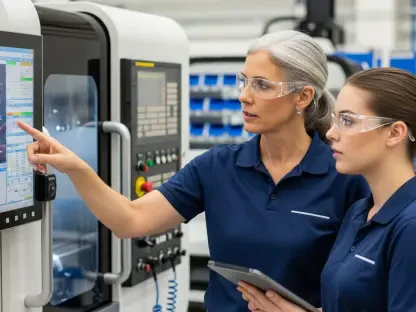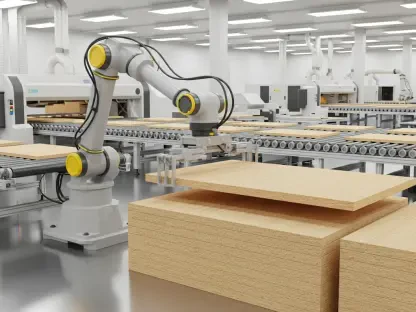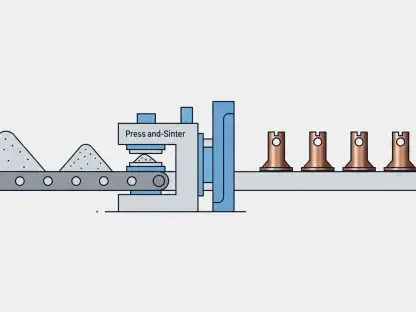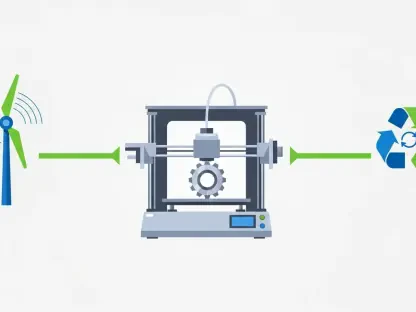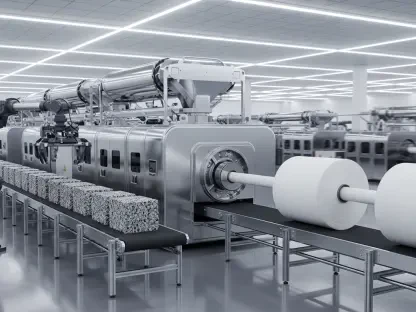The global market for metal powders used in additive manufacturing, or 3D printing, is experiencing rapid growth and significant advancements. This growth is primarily driven by increasing demand across various sectors, such as aerospace, automotive, and healthcare, which are leveraging the benefits of this technology for prototyping and producing end-use parts. Innovative developments in metal powder formulations and enhanced printing techniques are opening new frontiers and fostering expansion in the use of 3D printing.
As of 2023, the global market for metal powders in additive manufacturing is valued at USD 1.10 billion and is projected to reach approximately USD 2.01 billion by 2030, with a compound annual growth rate (CAGR) of 8.98%. This impressive growth is attributable to the rising application of 3D printing, driven by the need for custom parts and lightweight components. The ability of additive manufacturing to create complex geometries with minimal material waste is one of its most attractive features, making metal powders a highly sought-after resource.
Regional Insights and Trends
North America
In the United States, the additive manufacturing sector continues to lead in innovation, particularly in aerospace, healthcare, and automotive industries. The market is bolstered by significant mergers and acquisitions, such as GE Additive’s partnership with Renishaw for developing metal powders, which have strengthened market dynamics. The substantial investment by the U.S. government in space and defense technologies further fuels the demand for specialized metal powders.
The U.S. market is also characterized by a strong focus on research and development, with numerous companies and institutions working on advancing 3D printing technologies. This has led to the creation of high-performance metal powders that meet the stringent requirements of various industries, ensuring the continued growth of the market. Additionally, the integration of additive manufacturing into traditional manufacturing processes is helping U.S. industries to improve efficiency, reduce costs, and produce more intricate designs with greater accuracy.
Vietnam
Vietnam’s manufacturing sector is increasingly adopting additive manufacturing. The low production costs and a strong focus on innovation present considerable growth opportunities for metal powder usage in 3D printing. Companies like Vietnam Metal Industries are spearheading efforts to integrate these technologies into manufacturing processes, thereby enhancing the competitiveness of the industrial sector.
The Vietnamese government is also playing a crucial role in promoting the adoption of 3D printing technologies. Through various initiatives and incentives, the government aims to position Vietnam as a key player in the global additive manufacturing market, further driving the demand for metal powders. The collaboration between local firms and international partners is fostering knowledge transfer and technological advancements, creating a conducive environment for the growth of the metal powders market in Vietnam.
Thailand
Thailand sees rising demand for high-performance metal powders, particularly in the automotive and aerospace sectors. The government’s push towards digital transformation and Industry 4.0 has spurred companies to integrate additive manufacturing processes. Thai Metal Powder Co. Ltd. is a notable player, focusing on producing specialized powders for advanced applications, including automotive parts and medical devices.
The Thai market is also benefiting from collaborations between local companies and international partners. These partnerships are facilitating the transfer of knowledge and technology, enabling Thai manufacturers to produce high-quality metal powders that meet global standards. Additionally, the Thai government’s support for research and development in additive manufacturing is paving the way for new innovations, creating a favorable environment for market expansion and attracting more investments in the sector.
Japan
Japan’s market for metal powders is thriving due to its robust industrial base in automotive, aerospace, and robotics. Government support through subsidies and funding is encouraging innovation in manufacturing, particularly in additive manufacturing. Leading companies like Fujifilm and Mitsubishi Materials are making significant strides in developing metal powders tailored for 3D printing, positioning Japan as a leader in this technology.
The Japanese market is also characterized by a strong emphasis on quality and precision. This focus has led to the development of metal powders that offer superior performance, making them highly sought after in various high-tech industries. Additionally, continuous collaborations between Japanese firms and academic institutions are fostering cutting-edge research, further driving innovations in metal powder formulations and application techniques in additive manufacturing.
South Korea
The metal powder market in South Korea is characterized by significant consolidation, with major players such as Samsung Electronics and Hyundai Motor Company collaborating to enhance their technological capabilities. Their focus lies in leveraging additive manufacturing for producing specialized parts, aimed at streamlining supply chains, reducing production costs, and increasing precision and customization.
South Korea’s commitment to innovation is also evident in its investment in research and development. This has resulted in the creation of advanced metal powders that meet the specific needs of various industries, ensuring the continued growth of the market. Furthermore, the government’s initiatives to promote digital manufacturing and smart factory solutions are enabling South Korean companies to adopt additive manufacturing technologies at a faster pace.
Singapore
Singapore is establishing itself as a hub for advanced manufacturing technologies, supported by its high-tech ecosystem and commitment to sustainability. The country’s focus on expanding its additive manufacturing sector is evident through the initiatives undertaken by centers like the SUTD Additive Manufacturing Center. These efforts are being applied across numerous industries, including aerospace, healthcare, and electronics.
The Singaporean government is also playing a pivotal role in promoting the adoption of 3D printing technologies. Through various funding programs and incentives, the government aims to position Singapore as a leader in the global additive manufacturing market, further driving the demand for metal powders. Moreover, public-private partnerships and collaborations with international tech firms are fostering innovation and ensuring that Singapore remains at the forefront of advanced manufacturing technologies.
China
China is rapidly expanding its use of metal powders in additive manufacturing, with significant applications in automotive, aerospace, and healthcare sectors. Major investments in research and development of advanced 3D printing technologies are driving this trend. The China National Chemical Corporation is among the leading producers of metal powders, meeting growing demands across multiple industries.
The Chinese market is also characterized by a strong focus on cost-efficiency and large-scale production. Government support, in the form of subsidies and infrastructure development, is further propelling the adoption of additive manufacturing technologies. Additionally, collaborations between Chinese companies and international tech firms are fostering innovations, ensuring that China remains a key player in the global metal powders market.
European Market Dynamics
Austria
Austria is embracing additive manufacturing, with a clear focus on sustainability and high-quality production. The automotive and aerospace sectors, supported by companies like Exone and voestalpine, are at the forefront of using metal powders for innovative applications. Austria’s focus on green technologies and minimizing manufacturing waste is expected to drive further expansion.
The Austrian government is also invested in promoting research and development in the field of additive manufacturing. By providing funding and support to local companies, Austria is creating a conducive environment for innovation and technological advancements, thus ensuring the sustained growth of the metal powders market.
Belgium
Belgium’s market for metal powders is propelled by the adoption of 3D printing within industrial and medical sectors. Leading companies like Materialise and 3D Systems are pioneering the development of advanced metal powders, positioning Belgium at the forefront of the European additive manufacturing landscape.
Collaborations between academic institutions and private enterprises are further driving research and innovation in the sector. In addition, supportive government policies and incentives are encouraging the adoption of additive manufacturing technologies, thereby boosting the demand for metal powders.
Germany
Germany stands out as a key player in the global market for metal powders, with companies such as EOS GmbH and ArcelorMittal leading research and development efforts. The country’s strong automotive and aerospace industries foster continuous innovation, which drives the demand for specialized metal powders that enable faster and more cost-effective production.
Germany’s commitment to maintaining high standards and quality in manufacturing processes is catching the attention of global partners. The government’s support through various initiatives and funding programs is also aiding the expansion of the metal powders market, ensuring that Germany remains a leader in additive manufacturing technologies.
France
The metal powder market in France is concentrated on automotive and aerospace applications. Companies like Safran and Dassault Systèmes are integrating additive manufacturing extensively within their processes, backed by government initiatives aimed at reducing carbon footprints and improving manufacturing sustainability.
France is also benefiting from collaborations between local firms and international technology partners. These collaborations are fostering the development of advanced metal powders that meet specific industry needs, thereby driving innovation and growth in the market.
Market Segmentation
The market for metal powders for additive manufacturing can be segmented by application, manufacturing technique, and material type.
By Application
3D printing encompasses the creation of three-dimensional objects from a digital file, offering unparalleled design flexibility and efficiency. Rapid prototyping leverages 3D printing to quickly fabricate scale models of physical parts, enabling companies to test designs and make necessary adjustments before mass production. Direct Digital Manufacturing involves the direct production of finished products from digital designs, eliminating the need for traditional manufacturing processes and reducing production time and costs significantly.
By Manufacturing Technique
Powder Bed is a 3D printing technique where a powder bed is selectively consolidated layer by layer to create precise and complex structures. Blown Powder involves a method where powder material is blown through a nozzle to be melted by a laser or electron beam, offering high-speed production and the ability to repair or add to existing components. Other techniques encompass emerging methods for metal powder utilization, each providing unique benefits tailored to specific industry needs and applications.
By Material Type
Alloy metal powders consist of two or more metallic elements, offering customized and high-performance solutions for various applications. Stainless Steel powders are highly durable and corrosion-resistant, making them ideal for heavy-duty and high-stress environments. Other metal types used in additive manufacturing, including precious metals and exotic alloys, cater to specific industry demands, providing versatility and adaptability in manufacturing processes.
Key Players
The key players in the global metal powders for additive manufacturing market include:Arconic Inc., ATI Powder Metals, AUBERT & DUVAL, BÖHLER Edelstahl GmbH & Co KG, Carpenter Technology Corporation, GKN Plc., Hitachi Metals, Ltd., Höganäs AB, Matsuura Machinery Corporation, Metaldyne Performance Group Inc, Miba AG, Praxair Technology Inc., Renishaw plc., Rio Tinto, Sandvik AB, Shaanxi Hengtong Intelligent Machine Co., Ltd, and 3D Systems Corporation.
Conclusion
The global market for metal powders used in additive manufacturing, commonly known as 3D printing, is undergoing rapid growth and significant advancements. This expansion is primarily fueled by the increasing demand in various sectors such as aerospace, automotive, and healthcare, which are adopting this technology to prototype and produce end-use parts. Innovative developments in metal powder formulations and improved printing techniques are breaking new ground and promoting the broader use of 3D printing.
As of 2023, the global market for metal powders in additive manufacturing is valued at USD 1.10 billion and is anticipated to reach about USD 2.01 billion by 2030, with a compound annual growth rate (CAGR) of 8.98%. This remarkable growth is due to the expanding application of 3D printing, driven by the need for custom parts and lightweight components. Additive manufacturing’s ability to create complex geometries with minimal material waste is one of its most appealing features, making metal powders a highly valuable resource.


